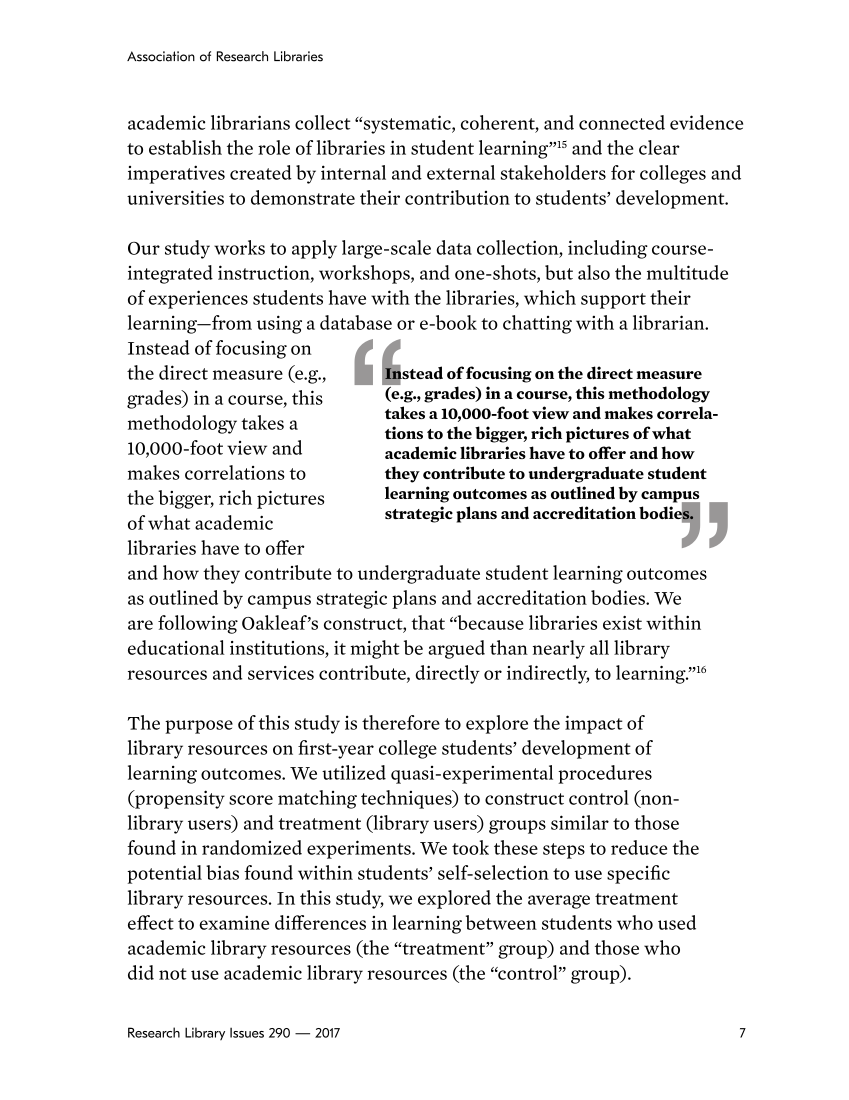7 Association of Research Libraries Research Library Issues 290 — 2017 academic librarians collect “systematic, coherent, and connected evidence to establish the role of libraries in student learning”15 and the clear imperatives created by internal and external stakeholders for colleges and universities to demonstrate their contribution to students’ development. Our study works to apply large-scale data collection, including course- integrated instruction, workshops, and one-shots, but also the multitude of experiences students have with the libraries, which support their learning—from using a database or e-book to chatting with a librarian. Instead of focusing on the direct measure (e.g., grades) in a course, this methodology takes a 10,000-foot view and makes correlations to the bigger, rich pictures of what academic libraries have to offer and how they contribute to undergraduate student learning outcomes as outlined by campus strategic plans and accreditation bodies. We are following Oakleaf’s construct, that “because libraries exist within educational institutions, it might be argued than nearly all library resources and services contribute, directly or indirectly, to learning.”16 The purpose of this study is therefore to explore the impact of library resources on first-year college students’ development of learning outcomes. We utilized quasi-experimental procedures (propensity score matching techniques) to construct control (non- library users) and treatment (library users) groups similar to those found in randomized experiments. We took these steps to reduce the potential bias found within students’ self-selection to use specific library resources. In this study, we explored the average treatment effect to examine differences in learning between students who used academic library resources (the “treatment” group) and those who did not use academic library resources (the “control” group). Instead of focusing on the direct measure (e.g., grades) in a course, this methodology takes a 10,000-foot view and makes correla- tions to the bigger, rich pictures of what academic libraries have to offer and how they contribute to undergraduate student learning outcomes as outlined by campus strategic plans and accreditation bodies.









































